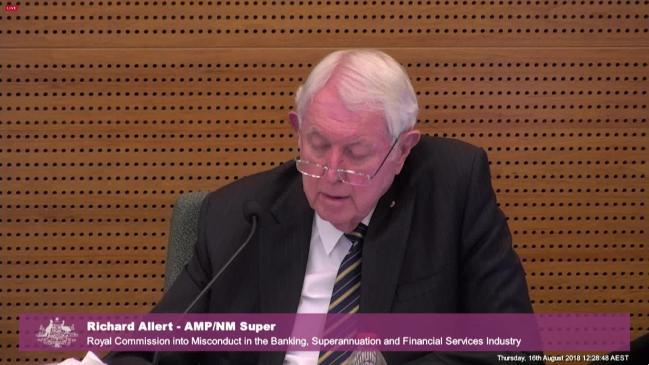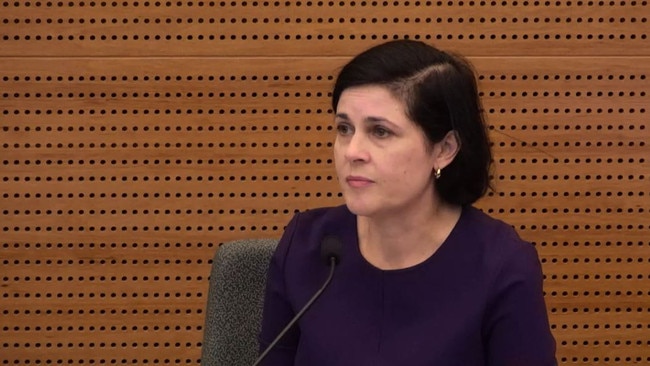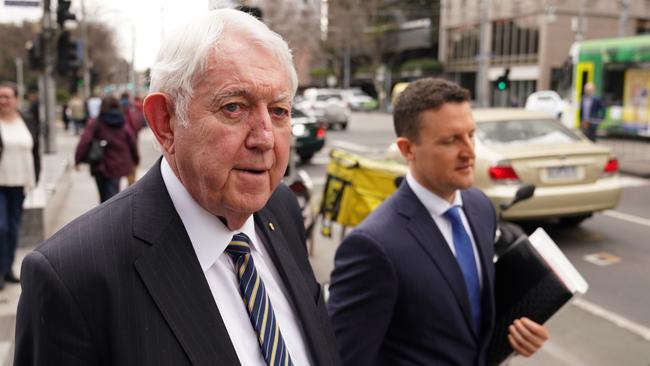Banking royal commission: AMP kept trustee in the dark over plan to drag out MySuper transition
AMP kept the trustee of its super business out of the loop on a plan to drag out the required MySuper transition, inquiry hears.

AMP and its various investment and management arms kept the trustee of its superannuation business in the dark over decisions, including plans to drag out the legally-required MySuper transition to keep up to $86.5m of profits from older high-fee products, the royal commission has heard.
Under examination at the royal commission today, Rachel Sansom, AMP’s director of regulatory governance who is in charge of the company’s superannuation business, revealed that the trustee lacked the power to set the level of fees its members were charged, lacked the ability to set investment return targets and had trouble getting different arms of the conglomerate to agree to common measurements of investment performance.
In fact, Ms Sansom admitted that any changes to the fee structure of the fund’s MySuper products would have to be approved by the AMP holding company, as it would affect the profitability of the overall business.

“It is the fact, is it, that the re-pricing of MySuper requires a decision of the holding company board,” royal commissioner Kenneth Hayne asked. “Yes, due to the size of it,” Ms Sansom said.
“Not just due to the size of it, but because of the impact on the profitability of the group as a whole?” Mr Hayne asked. “That’s correct, yes,” Ms Sansom said.
Ms Sansom was forced to circulate performance tables of its products through AMP’s various business arms, which had been calculating returns and fees differently.
The royal commission heard that AMP’s two trustees, AMP Super and NM Super, trade services and management fees with a host of related parties inside the AMP conglomerate, including AMP Life, AMP Capital and NMMT Limited.
Rather than the trustee of the super funds deciding on what fees were charged, Ms Sansom said various proposals were brought to the trustee office from AMP’s divisions which she would then be asked to approve.
An actuarial report provided to AMP and tabled at the commission proposed a drawn-out period for transitioning member savings out of high-fee legacy products and into low-fee MySuper accounts, in line with 2012 laws where funds were given until 2017 to make the transition.
Recap today’s royal commission developments via our live blog
Documents tabled at the royal commission revealed AMP stood to lose $86.5m worth of profits in fees if it made the transition as early as 2014.
It showed that for a number of products AMP was planning to wait until mid-2016 to transfer at least 60 per cent of the assets, while in the case of its Super Leader product it was planning to withhold 85 per cent of assets from the low-fee fund until after mid-July 2016.
“Is this is the kind of information that you would think would be typically provided to the trustee?” counsel assisting Michael Hodge, QC, asked. “No, it wouldn’t,” Ms Sansom said.
A “heat map” report compiled by PwC for AMP, but which was not shown to AMP’s super trustee, modelled that the company was warned that up to 50 per cent of financial planner revenue was “exposed” to the introduction of MySuper.
“Do you know whether the heat map was used to guide the MySuper transition?” Mr Hodge asked. “I would expect different parts of AMP to do different parts of analysis for different stakeholder groups,” Ms Sansom said.
“And the trustee, in the way that it seemingly always does, approved that for the business?”

Mr Hodge asked. “Yes,” Ms Sansom said.
In other evidence, AMP Capital had lobbied the boards of AMP Life and AMP Super to lower their investment return targets as they were concerned low interest rate environments would make it more difficult to achieve the targets.
“This has happened a number of times, AMP capital has asked for a lower return target?” Mr Hodge asked. “Yes,” Ms Sansom said.
Ms Sansom also told the commission league tables of fees and returns had to be compiled because there was a dispute over compiling returns on a gross or a net-of-fees basis. This showed that for the super product tailored for savers born in the 1950s ranked 49 of 63 comparable products on net outcomes and 59 of 63 on fees. For savers born in the 1960s, AMP’s product ranked 27 of 34 for net outcomes and 31 of 34 on fees.




To join the conversation, please log in. Don't have an account? Register
Join the conversation, you are commenting as Logout